We don’t listen with our ears; we listen with our brain.
Hearing devices can help a person detect sounds more efficiently, but they don’t necessarily provide good listening skills. Restoring normal volume levels with amplification does not ensure that speech understanding is effectively restored. While good hearing is a physical function that requires a normal auditory system, speech understanding is a complex process involving normal volume of sound, normal function of the ear and auditory pathways, and a complex meshing of the two systems by our brain. Effective listening and auditory-based communications are skills that require each system to work correctly, and when a hearing loss is present, it disrupts this perfectly designed mechanism.
Good auditory discrimination skills are required for effective communication.
As technically advanced as modern hearing aids might be, hearing devices alone cannot produce listening skills sufficient for our complex communication system. There are a number of reasons for this. For example, to be a good listener, one must integrate a number of skills including attending, understanding, and remembering. Unfortunately, many of these cognitive skills deteriorate as we age. This may show up as a worsening of short-term memory or increased difficulty understanding rapidly presented speech. Despite the fact that those with sensorineural hearing loss characteristically have a difficult time in noisy environments, advancements in hearing technology have certainly improved the quality of sound for wearers in challenging listening environments.
Evidence suggests that loss of hearing produces physical changes in auditory pathways to the brain.
Data suggests that when parts of the auditory pathways and cortex are not receiving sufficient stimulation, they actually undergo morphological changes (and these changes are not good ones). Thus, the old adage of “use it or lose it” actually applies to our auditory mechanism and listening habits, because the hearing-impaired person’s brain might not be receiving the kind of stimulation it needs in order to maintain its proper function without the use of hearing devices and appropriate aural rehabilitation following fitting.
Confidence that what you thought you heard was in reality what was spoken is vital.
Often, when people lose confidence in their ability to communicate in noisy social situations, they simply drop out and avoid such environments. While this may ease the emotional ramifications of hearing loss by saving effort and embarrassment in the short term, it ultimately costs them important personal and social contact. And, of course, social isolation is known to be a huge risk factor for developing dementia and Alzheimer’s disease.
Today’s high-tech hearing devices, coupled with aural-rehabilitation strategies as directed by your audiologist, can not only provide audibility but may also decrease the degradation of cognitive skills associated with aging. The need for additional assistance beyond that provided by devices alone (in the form of aural rehabilitation) is underscored by the fact that individuals presenting similar hearing patterns frequently report satisfaction and benefit from amplification.
Optimize your hearing aid experience with these methods, strategies, and techniques found on the Better Hearing Institute website:
1. Have realistic expectations about your hearing aids
2. Employ effective communication strategies with your social network
3. Utilize proven strategies and advanced hearing technologies for hearing better in noisy situations
4. Join a self-help group to share methods and techniques for optimizing your hearing aid experience
5. Use other assistive technology in addition to your hearing aids
6. Use closed captioning on TV or movies
7. Train your brain to listen (auditory-retraining therapy)
Three examples of exercises you can try immediately:
1. Use closed captioning TV, or record programs using a DVR or TiVo. Watch the show live. Then replay it with closed captioning or by slowing it down.
2. Listen to audiobooks while reading along with the actual book.
3. Buy two copies of the newspaper. Have your spouse or colleague read one copy aloud while you are listening only, and then go ahead and read it yourself. Try this in quiet at first, and then proceed to noisier listening environments.
Your audiologist can assist you in supplementing hearing aids with additional rehabilitation methods as mentioned above, and this will offer you the kinds of skills and communication strategies that can make all the difference in your performance with hearing devices.
Comprehensive auditory rehabilitation uses many approaches to compensate for hearing loss.
While hearing aids are an essential element of aural rehabilitation, another vital components is education to help you better understand the relationship between cognition and auditory function, learning and incorporating interactive communication strategies, and enhancing auditory performance with computer-based programs designed to enhance the ability to interpret auditory experiences through a variety of exercises and activities. When you or someone you love purchases hearing aids, talk to the audiologist about establishing a comprehensive communication-enhancement plan designed specifically for you. The mere introduction of amplification will not produce optimal readaptation of the auditory system or result in the most advantageous auditory skills unless accompanied by training.

